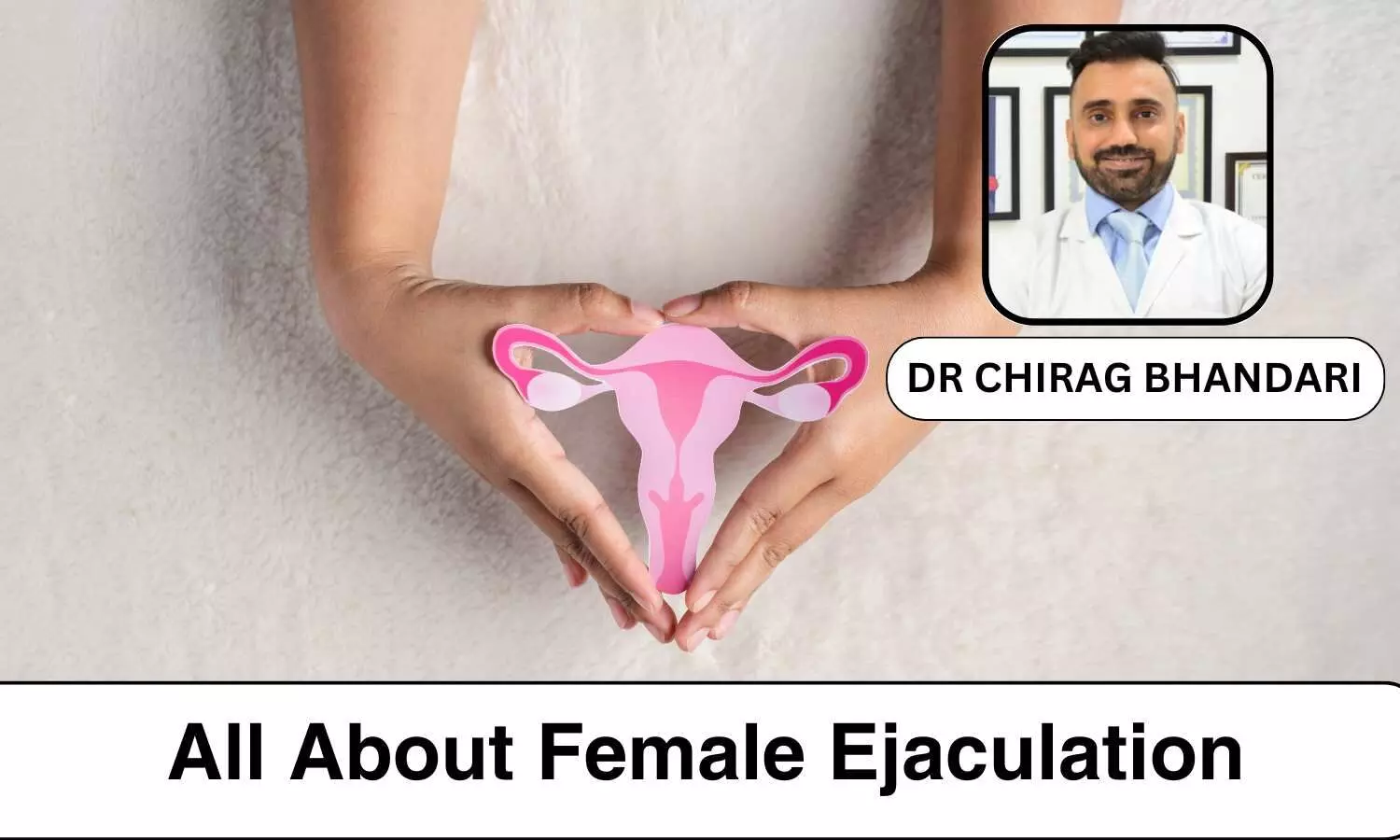Exploring Female Ejaculation: Debunking Myths and Understanding Realities - Dr Chirag Bhandari

For a long time, the topic of female ejaculation has been surrounded by curiosity and discussion. Recent research and personal experiences indicate that female ejaculation is more common than previously thought. In a study conducted in 2017, it was found that almost 70% of women experience ejaculation at least once in their lives. This highlights the need for a better understanding of female ejaculation and its implications for sexual health and satisfaction.
What is Female Ejaculation?
Female ejaculation refers to the release of fluid from the urethra during sexual activity. This can occur during arousal but doesn't always coincide with an orgasm. The fluid comes from the Skene's glands, also known as the female prostate, which are located around the vaginal wall.
The fluid contains prostate-specific antigen (PSA), a protein that is also found in male semen. This connection has drawn interest in understanding the similarities and differences in sexual responses between males and females.
The Science of Female Ejaculation
The fluid released during female ejaculation is often mistaken for urine, but it is not. It is produced by the Skene's glands, which are similar to the male prostate. When stimulated, these glands can release a clear or milky fluid, with the amount varying from a few drops to a larger volume. This fluid contains enzymes and other substances that make it distinct from urine, emphasizing its unique nature.
Research indicates that the Skene's glands are homologous to the male prostate, meaning they have a common embryological origin. This similarity explains why female ejaculate contains prostate-specific antigen (PSA). In males, PSA is an enzyme that helps liquefy semen, and its presence in female ejaculate suggests a similar function for the Skene's glands.
The process of female ejaculation involves complex interactions between the nervous system, endocrine system, and genital structures. During sexual arousal, increased blood flow to the genital area causes the Skene's glands to swell and become more sensitive. With adequate stimulation, the glands release their fluid through the urethra, much like the male ejaculation process.
The Role of the G-Spot
The G-spot, or Grafenberg spot, is often linked to female ejaculation. This area, located on the front wall of the vagina, is thought to be highly sensitive and capable of producing intense pleasure when stimulated.
Some researchers believe that the G-spot is connected to the Skene's glands and that stimulating this area can trigger the release of ejaculate fluid. However, the exact nature and existence of the G-spot are still subjects of scientific debate and there are enough people who do not believe in anything as a G-spot.
Despite the controversy, many women report experiencing heightened arousal and pleasure from G-spot stimulation, with some even ejaculating as a result. Understanding the G-spot's role in female sexual response is crucial for sexual health professionals and individuals seeking to enhance their sexual experiences.
Sexual Satisfaction Without Ejaculation
It's important to understand that female ejaculation is not necessary for sexual satisfaction. The absence of ejaculation does not mean a woman did not enjoy the sexual experience. Every woman's body responds differently to sexual stimulation, and ejaculation is just one aspect of the multifaceted experience of sexual pleasure.
For many women, sexual satisfaction is derived from a combination of physical, emotional, and psychological factors. Open communication with a partner, the level of intimacy and trust in the relationship, and the overall quality of the sexual experience all contribute to a woman's sense of fulfillment. Therefore, it is crucial to recognize that ejaculation is not a definitive indicator of sexual pleasure or success.
Conclusion
Female ejaculation is a natural and common occurrence for many women. Gaining a better understanding of this phenomenon helps to dispel myths and promotes a more comprehensive view of female sexuality. Whether or not a woman ejaculates, what matters most is the mutual satisfaction and connection experienced by partners. By acknowledging the diversity of women's sexual responses, we can create a more inclusive and supportive environment for exploring and enjoying sexual intimacy.
Encouraging open discussions and further research on female sexual health can enhance our understanding and well-being. Promoting scientific inquiry and reducing the stigma associated with female ejaculation can empower women to embrace their sexuality and seek the information and resources they need for sexual health and satisfaction. Through continued education and awareness, we can work towards a society that values and respects the sexual experiences of all individuals, regardless of their unique physiological responses.


